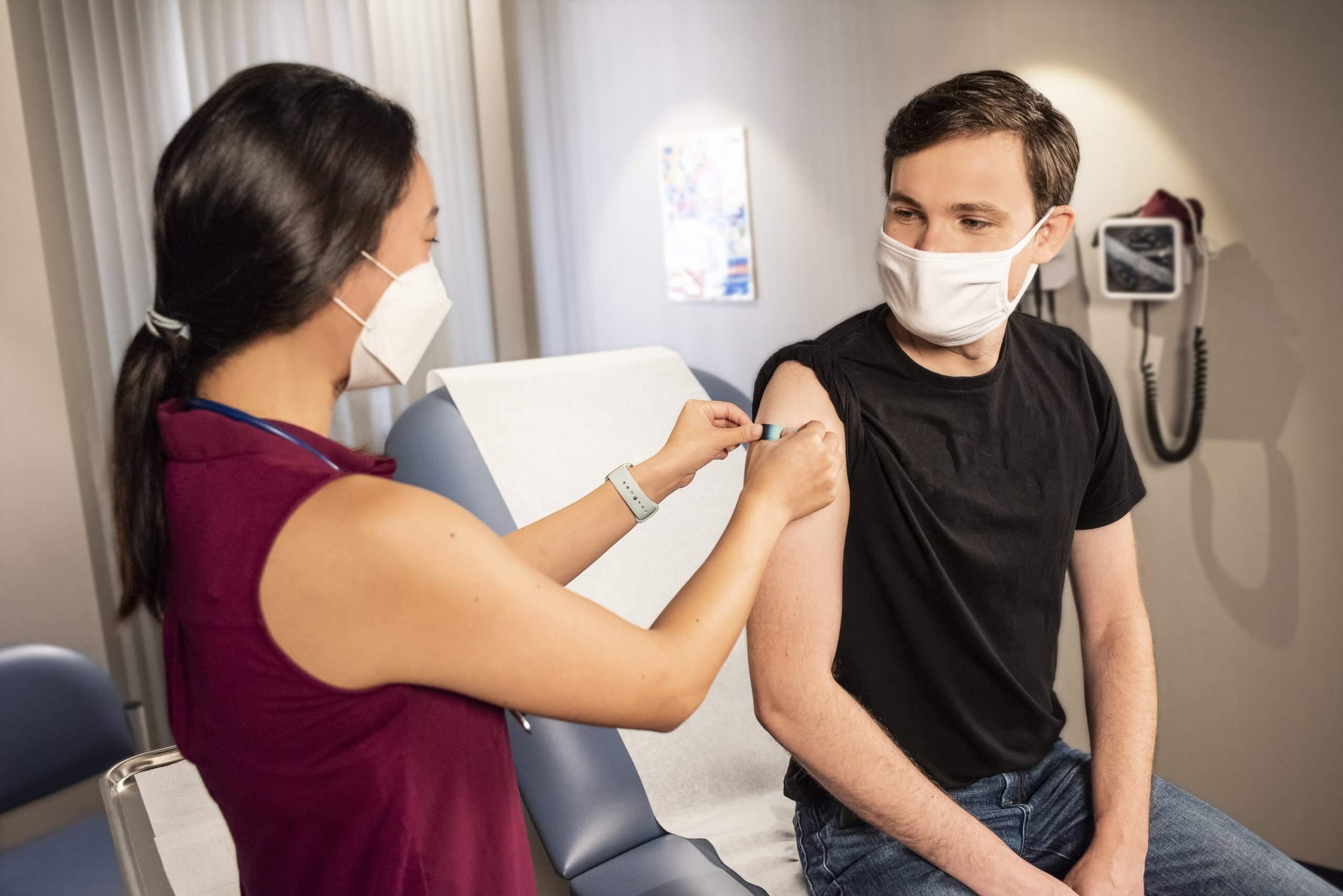
At this time a year ago, when the prevailing wisdom was that the general population didn’t need to a wear masks to protect themselves and that the only defense against the worst pandemic in a century was just washing your hands more, it would have been unthinkable to assume that we’d have a vaccine by now. Yet here we are a year later, with not one but three different vaccines proven effective and approved for use. That said, we won’t be out of the woods until the vast majority of adults have been immunized, and brands are taking it upon themselves to use social media to nudge that process along a little faster.
So what are brands doing on social media that’s actually moving the needle around vaccine awareness? Using our social media analytics, ListenFirst identified 7 different approaches that are proving successful.
Strategy #1. Outline Why Getting Vaccinated Is Both Safe And Necessary
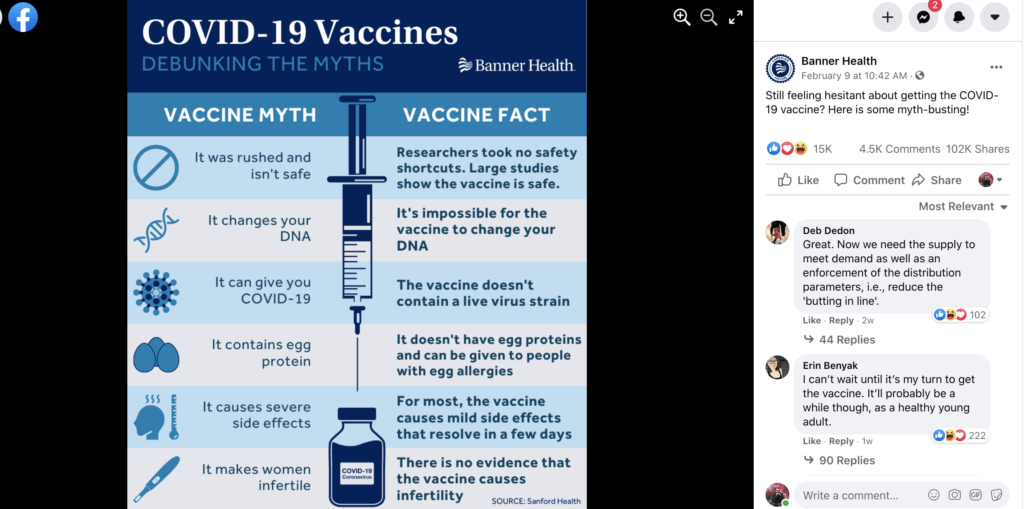
According to a February 2021 poll, a third of Americans say they definitely or probably won’t get the COVID-19 vaccine; meaning it’s still important for brands to use social media to communicate that vaccinations are both safe and actually work. The audience seems most responsive; when their fears are addressed in detail, point by point. For example, a Banner Health infographic separating COVID-19 Vaccines myths vs. facts generated 81,570 responses on Facebook while a Walgreen video with a doctor explaining why it’s important to get the vaccine got 15,441 video views.
Strategy #2. Show Your Employees Are Vaccinated To Make Your Business Seem More Safe
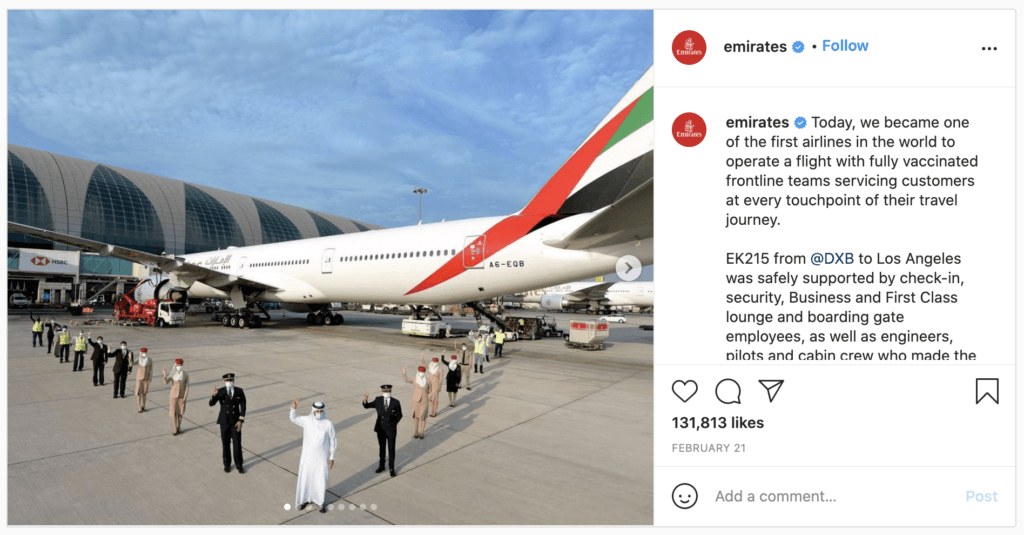
Emirates Airline got 131,404 responses to an Instagram post announcing their first flight with fully vaccinated frontline teams servicing customers and as more people become inoculated this type of brand post is going to become more common. Customers don’t want to frequent businesses where they’re worried about catching the coronavirus, and being a company where all your employees have already gotten their shots could turn into a big competitive advantage.
Strategy #3. Share How Your Helping With Community Outreach Around Vaccinations
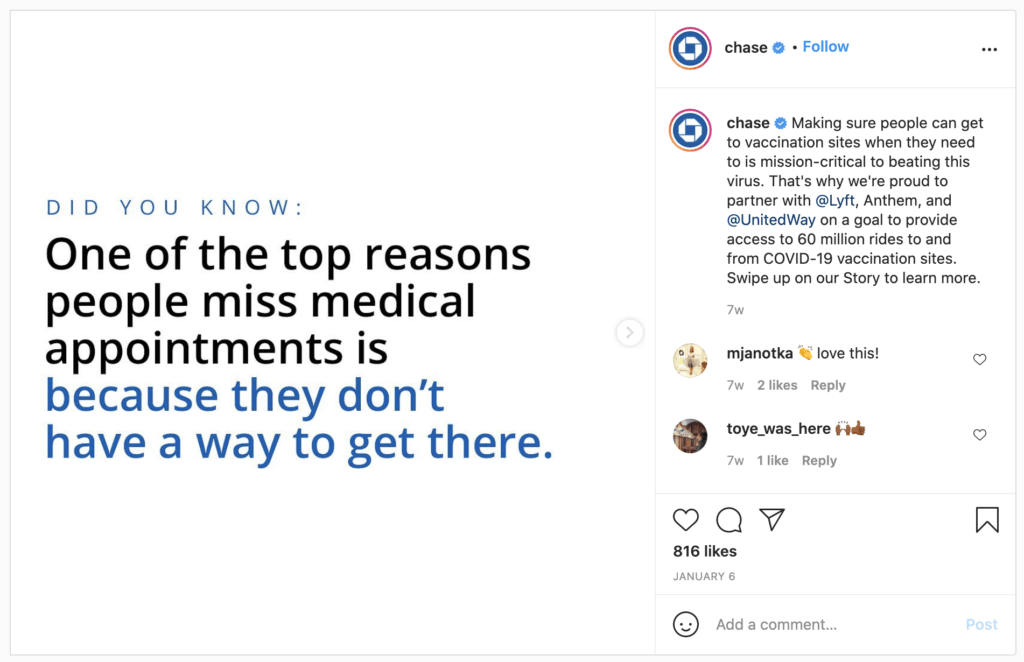
In reality even when people aren’t afraid of getting vaccines, there are still logistical obstacles, and brands are sharing on social media how they’re addressing those challenges. For example, Chase Bank got 845 responses to an Instagram post talking about how they’re teaming up with Lyft, Anthem and the United Way to provide 60 million rides to COVID-19 vaccination sites. Meanwhile, TOMS posted about how their charitable fund has been used to provide PPE supplies and vaccination needs moving forward for underserved, at-risk communities in a post that got 674 responses on Instagram. The social audience appreciates when brands show they’re interested in taking care of people, as opposed to just focusing on the disease.
Strategy #4. Motivate Your Own Employees To Get Vaccinated
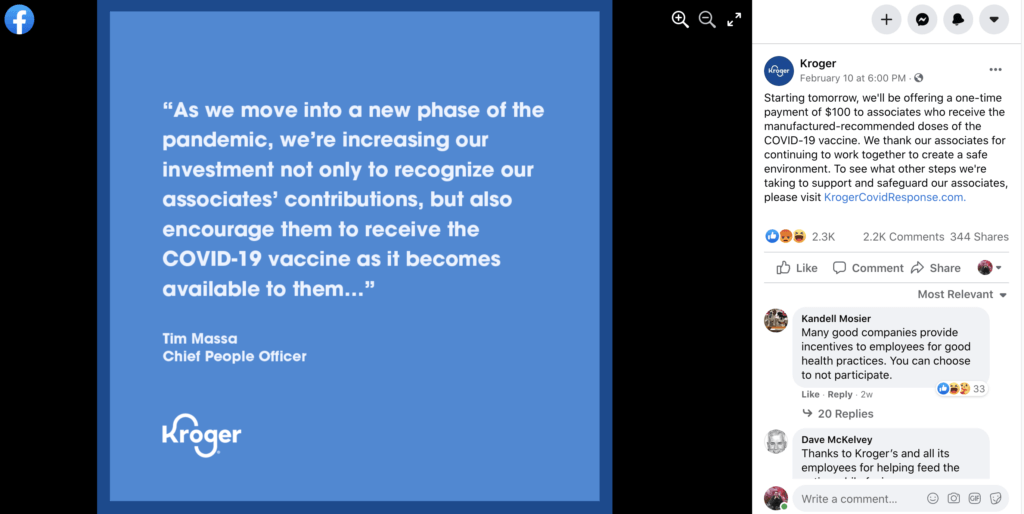
Often companies are taking to social media either to speak to their employees directly about getting immunized, or to illustrate to the general public how much they’re incentivizing their employees getting vaccinated. For example, the US Navy got 45,701 responses for an Instagram video singing all shipmates should get their vaccine shots. Additionally, Kroger got 3,514 responses to a Facebook post that they’re giving $100 each to employees who get vaccinated while Mondelēz International posted a video on how they are supporting their colleagues getting vaccinated which generated 106 responses. The social audience responds extremely favorably to seeing companies prioritizing the health of their employees.
Strategy #5. Use Celebrities To Promote The Importance Of Vaccines
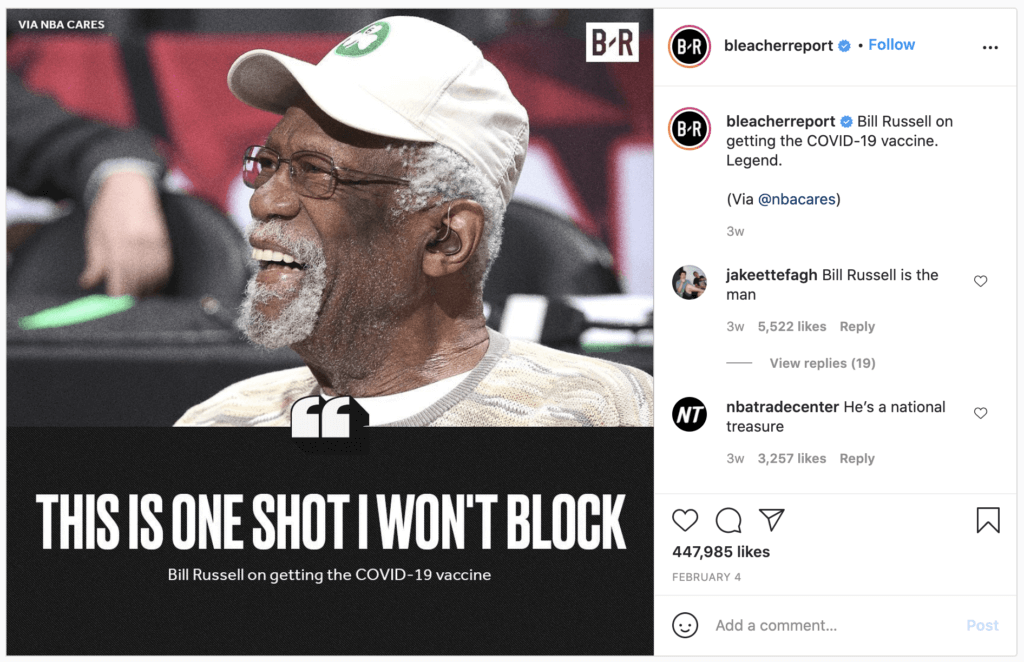
Nothing will convince people the vaccines are safe more effectively than seeing people they know successfully getting vaccinated and nobody is more known at scale than celebrities. The NBA especially has been proactive in making sure their famous faces are advocating for inoculation, for example they shared a message from Kareem Abdul-Jabbar showing him getting vaccinated that received 101,304 responses on Instagram while Bleacher Report got 452,244 responses for a repost of a Bill Russell meme saying “This is one shot I won’t block.”
Strategy #6. Showcase Your Brand’s Role In The Vaccine Supply Chain
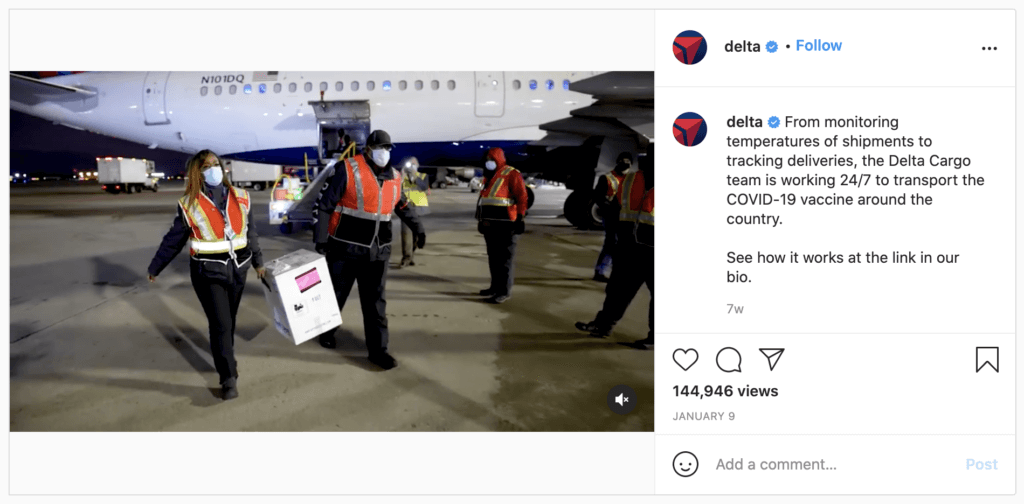
This single most common type of brand post about vaccines at the moment is companies highlighting their supply chain contribution to beating the coronavirus. For example, looking at airlines alone, Delta received 8,091 responses to an Instagram video showing them delivering the COVID-19 vaccine with United getting 3,816 responses to a Facebook post about how they flew vaccinated healthcare workers to the Super Bowl. Around ground transportation, UPS had 8,491 responses to an Instagram post how they and FedEx might normally be competitors but they’re on the same team in delivering life saving vaccines while FedEx got 1,825 responses to a video Tweet about the chief pilot who flew out the first doses of the Pfizer-BioNTech COVID-19 vaccine in December.
Meanwhile, IBM got 3,792 responses to an Instagram post discussing how they developed an open source platform that facilitates the delivery of vaccines, with 3M getting 368 responses to a Facebook video talking about how to enable vaccine production, they’re ramping up manufacturing biopharma products.
Strategy #7. Vaccine Manufacturers Providing Updates

While it’s a small subset of brands this is applicable to it’s critically important that in order to build trust, that the companies actually making the vaccines are using social media to communicate. For example, Pfizer got 6,827 responses to an Instagram photo showing President Biden visiting their Kalamazoo, Michigan site that is part of the vaccine supply chain while Johnson & Johnson has used social media to update their audience on the progress of their vaccine, getting 2,818 responses to a Facebook post sharing the topline data to their clinical trials. Given the trust issues some have around getting vaccinated, it’s important that these drug companies be as transparent as possible on social media.
Want a more personalized assessment of how your brand should handle social media in this transitory period? Request a ListenFirst demo today!


